
Madiha Mahmood
Madiha is a health and safety practitioner with over 15 years' experience in the manufacturing sector and the oil & gas industry. She is a Chartered Member of the Institute of Occupational Safety and Health.

Madiha is a health and safety practitioner with over 15 years' experience in the manufacturing sector and the oil & gas industry. She is a Chartered Member of the Institute of Occupational Safety and Health.
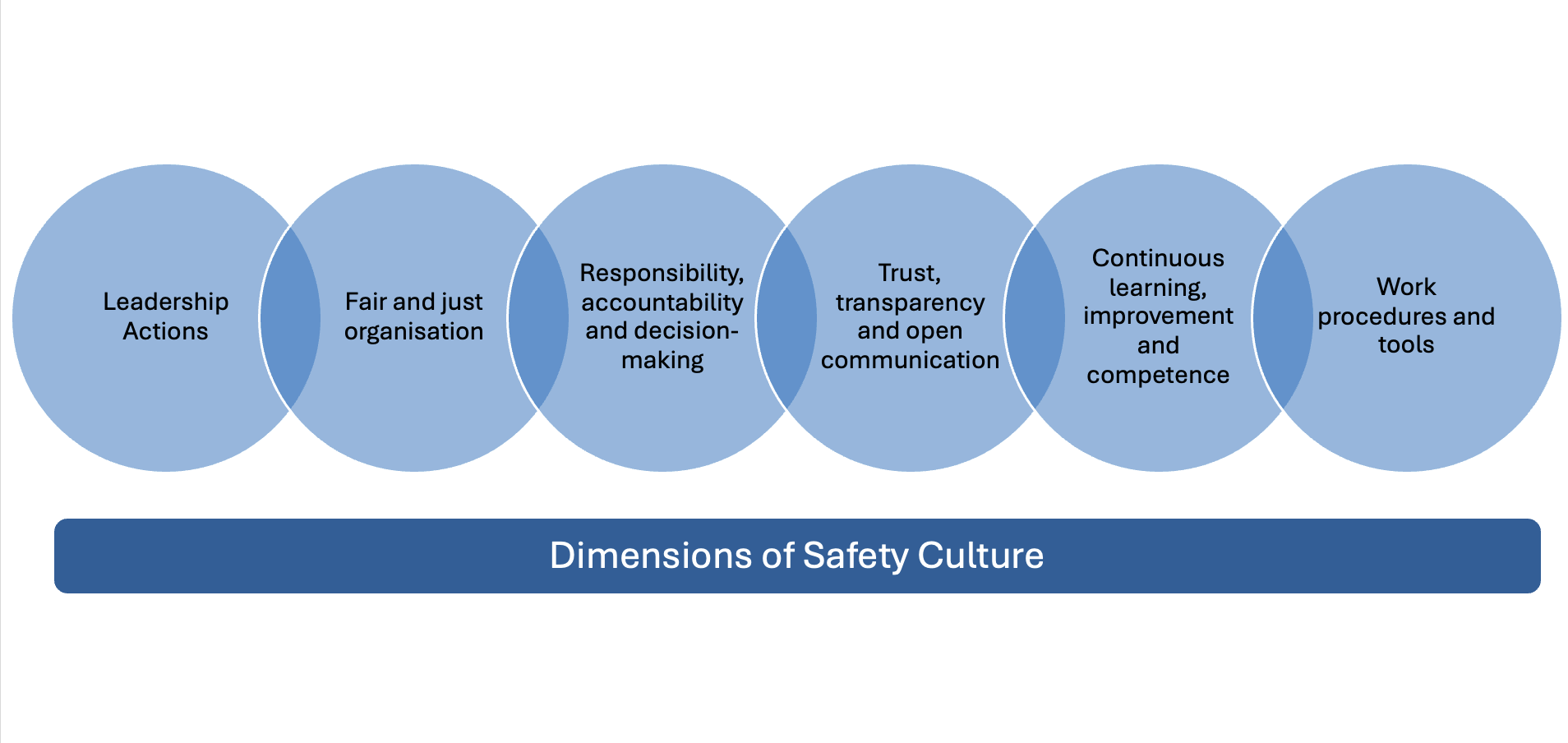
Introduction
Mixed-methods research was carried out to assess the safety culture in an organisation. The qualitative and quantitative outcomes were reviewed for consistency between the two and synthesised using using statistical and thematic analyses tools in order to gain a deeper understanding of the safety culture.
Research Method
A 49-item questionnaire based on a 5-point Likert scale was used to collect quantitative data on safety culture in an organisation. The questions were based on six dimension of safety culture, represented in the image below, were largely derived from James Reason’s model of safety culture.
In line with sequential explanatory strategy, the quantitative data collection was followed up with a qualitative questionnaire consisting of six open-ended questions, each requiring a descriptive response for a deeper understanding of safety culture.
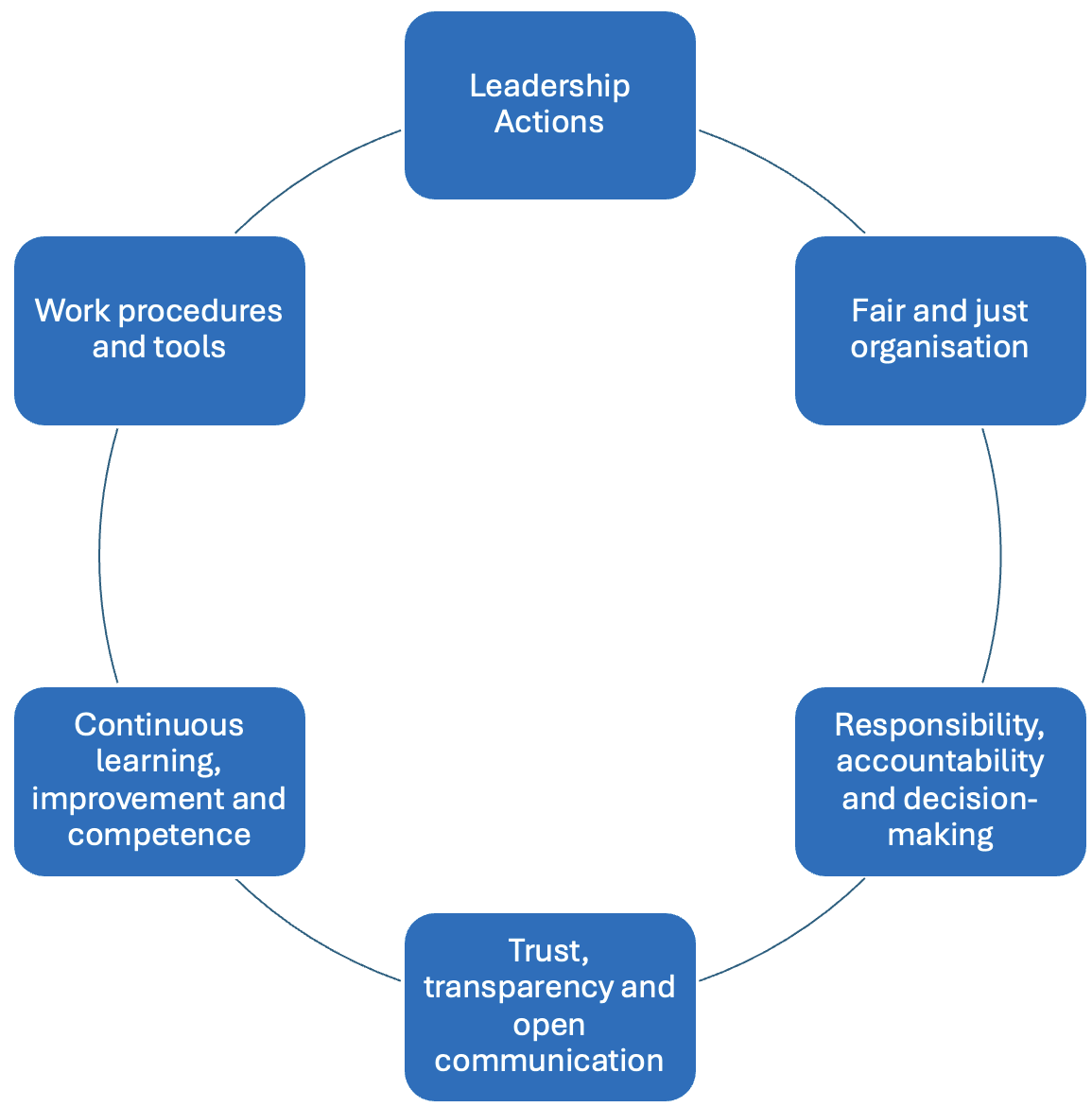
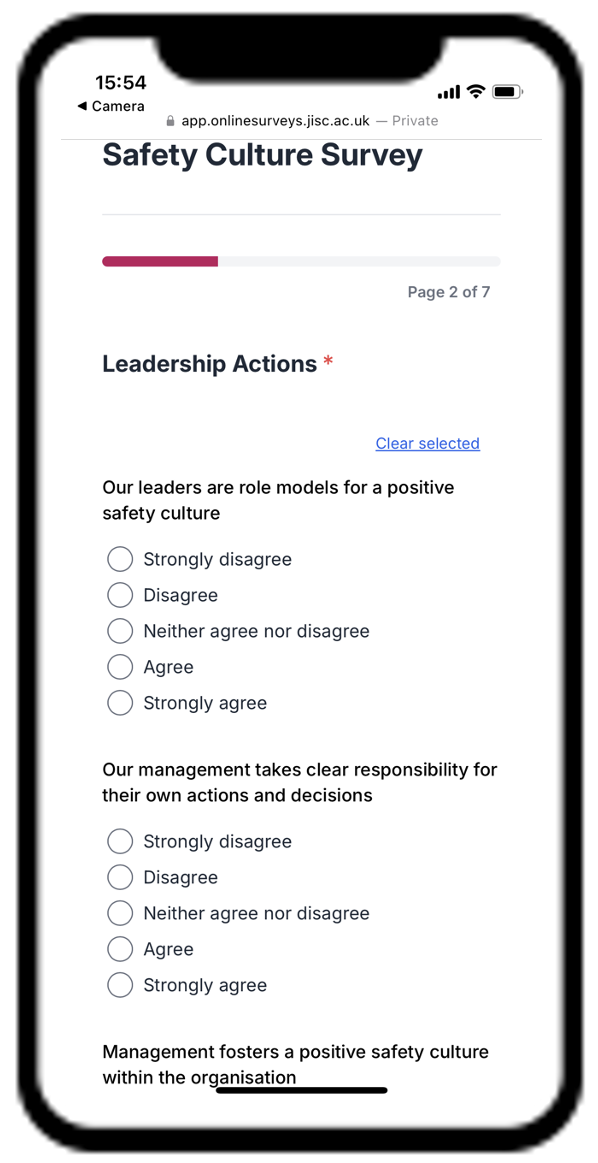
Dimensions of Safety Culture
Participant view of the survey questionnaire on a mobile device
Data Collection and Analysis
The surveys were conducted using an online survey platform.
Quantitative data from the 89 responses received was analysed using SPSS, with Median and Mode considered appropriate analytic measures for the ordinal data obtained from the survey. Nearly 84% of the questionnaire items showed a Median and a Mode value of 4 or above, indicating agreement or strong agreement with the statements covering the six cultural dimensions. Responses related to “management commitment” are represented graphically below.
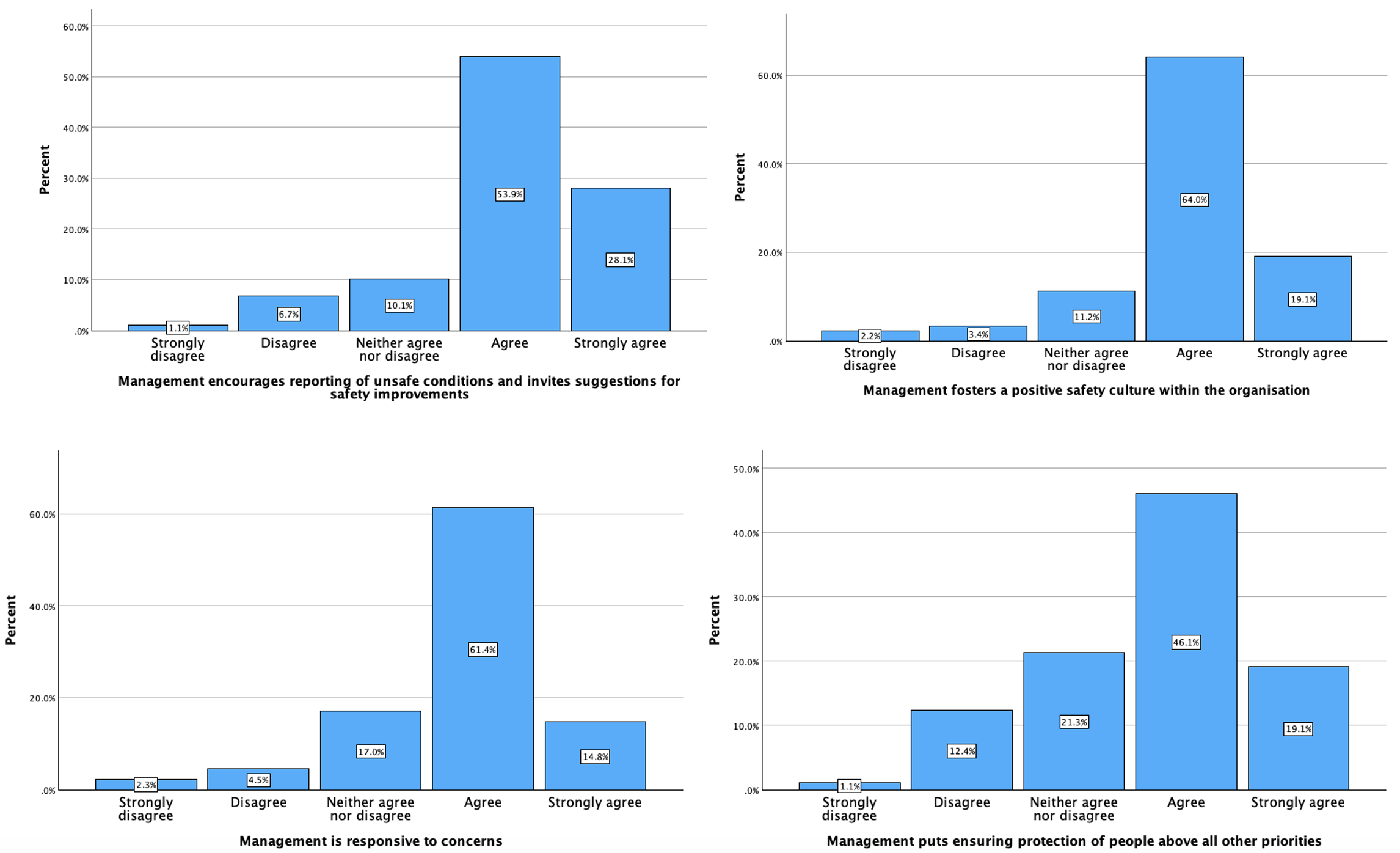
Graphical representation of quantitative data related to “management commitment to safety”
Descriptive responses to the qualitative questionnaires (n=22) were reviewed and thematic analysis carried out using the qualitative data analysis software NVivo. Factors descriptive of safety culture coded under one of the six safety culture dimensions.
The word cloud below (left) shows descriptors used for safety culture, showing that the words “good” and “strong” were used frequently by respondents. Word cloud developed from responses to the question on safety responsibility reveals that a large majority of respondents consider safety to be everyone’s responsibility, which is an indicator of a healthy safety culture where everyone takes ownership and feels responsible for safety.

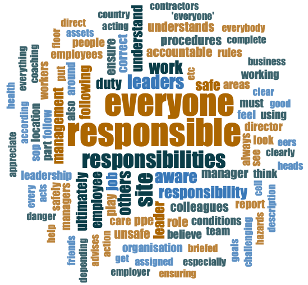
Word frequency analyses of qualitative data
(Left: descriptors of safety culture; Right: safety responsibilities in the organisation)
Secondary Data Analysis
Data available from the organisation’s annual employee engagement survey showed that of the 40 statements covering various facets of organisational culture, the most favourable survey response was to the question “I believe the company is committed to my safety” with 95% of respondents responding positively to the statement. This indicates that a large majority of respondents had a very positive sentiment about the company’s commitment to safety.
I believe the company is committed to my safety

Conclusion
The insights generated from both approaches were found to be broadly consistent, both suggesting that the organisation has a strong safety culture in which people feel they can raise issues without fear of reprisals and with trust in management to listen to their concerns. This was also validated by the outcome of the secondary data provided by the organisation which also showed a strong belief among respondents that the company is committed to safety.
Although a small number of aspects showed unexplained disparity between the outcome of the two approaches but on the whole, the weaknesses of the qualitative approach were outweighed by the contextual detail and insight gained from a significantly smaller volume of data compared to that obtained using quantitative method. One such example is the feedback revealed in qualitative data related to lack of management visibility to and engagement with frontline employees. Relying on the attitudinal data obtained from questionnaire results alone would likely have missed the rich information gleaned from the qualitative survey.
Anthropometric considerations in equipment design
Carried out a study of the height of machine ‘hoppers’ vs anthropometry of production line operators, and assessed the suitability of hoppers of varying dimensions for operators feeding components into the hoppers.
Limitations for operator population in certain percentiles of shoulder height and limb length were noted and recommendations for changes made.

Photos show the variation in height of hoppers across the production lines for the same operator demographic.


Assessment of Manual Handling Tasks in the Workplace
Carried out a study of various manual handling activities at a manufacturing site and quantified the risk using Rapid Entire Body Assessment (REBA) and Ovako Work Posture Analysis System (OWAS). The study also involved biomechanical analysis of the postures.
Recommendations were made to the organisation to reduce the risk of musculoskeletal injuries in the workforce. Among other measures, these included installation of scissor lift tables for pallets to eliminate the horizontal lift distance, a change in layout to reduce the distance travelled with the load and provision of cut-outs on boxes to allow easier grip.


Role of Human Factors in Accidents
Madiha has a keen interest in understanding the role of human factors in accidents. As part of her coursework, she has studied human factor failings in the Herald of Free Enterprise incident (1987) and Deepwater Horizon blow-out (2010). She is currently studying literature related to the Chernobyl nuclear disaster (1986) to enhance her understanding of human factors.

